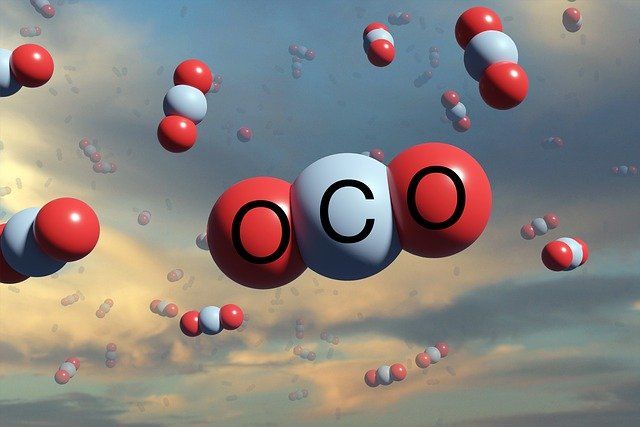The United Nations has drawn up ‘Ecosystem Restoration’ as the theme for World Environment Day this year. It will kick off the United Nations Decade on Ecosystem Restoration and shine the spotlight on preserving and healing nature.
Environmental consciousness has certainly grown over the years. Individuals have become more vocal about it. It has become enshrined in corporate culture in the form of the ESG pillars of sustainability. Even governments today have to justify policy measures in the environmental context.
While this is a welcome change compared to only a few years ago, most of the narrative around the environment has been focused around emissions. Carbon neutrality, net-zero carbon, carbon footprint and so on have become buzzwords of environmental consciousness but there’s so much more to being eco-friendly than simply cutting emissions.
Preservation, conservation, protection and restoration are just as critical to healing our planet as cutting emissions.
Start early enough, inculcate these are practices, and damage to ecosystems can be mitigated to the extent that they won’t need restoration because the rules for management are already in place.
But then again, conservation and restoration are sweeping topics involving many aspects and moving parts.
What is important, whether you are an individual or a corporate, is to understand which of your activities has the greatest environmental impact and start by addressing those on priority.
If you ask me, there are two key priority areas we need to focus on from an ecosystem restoration perspective – Land use and ocean management.
Preserve our ecosystems, consume responsibly
In India, we have been slow to adopt modern agricultural techniques, which not only use land more sustainably but also replenish what has been degraded. Farming, over several years, degrades land. Nutrient loss, top soil erosion, water table reduction, loss of green cover are all consequences of irresponsible land use. They in turn lead to greater land instability, resulting in cracks, fissures and ultimately land use-related climate events.
The oceans too are facing a similar threat, in fact, far more critical. The majority of our oxygen comes from phytoplankton and microscopic flora from the marine ecosystem, far more than from trees. What’s more, we can’t actually see the degradation taking place. We live on land where the consequences of degradation caused by human activity are far more visible. But, while we are all aware of the polluting impact of plastics and effluents on the sea, we remain blissfully unaware of the damage done to marine ecosystems by our maritime activities.
Overfishing is creating massive imbalances in our oceans. Year round fishing is putting entire species at risk. Traditional fishermen have always known this. They do not go out in the monsoons because they know that is the breeding period for most marine life. However, driven by year-round demand, commercial fishing tries to maximise yield with little regard to restoration cycles.
What’s worse is the ‘collateral damage’ exacted by trawlers that fish on a large scale. A lot of species that they catch in their nets aren’t of any commercial value and are cast aside as by-catch to be discarded.
Ultimately, these practices derive from our preferences as consumers. We create the demand and commercial enterprises rush in to provide the supply. Therefore, through our choices, each one of us on an individual can aid the cause of conservation and help the planet heal. It takes a heartbeat to wipe out an entire ecosystem but a lifetime to build it back up. We can help by consuming produce that is local, seasonal and sustainably produced.
The corporate role
Of course, companies must do their bit too. But to action real change they must first be aware which of their activities is causing the greatest harm.
One of the avenues for ecosystem restoration that corporates use is working with several governmental and non-governmental agencies on geography-specific projects. The watershed programme by the National Bank for Agriculture and Rural Development (NABARD), a development bank under the Government of India, is a great example. Corporates such as Godrej, have partnered with NABARD to implement projects for improving the water table in water-stressed regions, which will have other positive rub-offs, including improved farmland productivity, soil nutrition and livelihood enhancement for local communities.
However, some of the SMEs and smaller companies sometimes do not have the knowledge or the resources to take up such initiatives. It is imperative for both larger corporates to extend their sustainability initiatives deeper into their value chain, as well as for government to incentivize good behaviour, if not penalize bad behaviour, we need to move past the idea that environmental disclosure is negative or punitive. Disclosure is simply identifying with credibility what areas a business needs to work on to mitigate its environmental impact.
Bigger companies also need to constantly keep broadening their perspective. For example, there are lots of instances of companies having taken steps to make their manufacturing and operations “greener”. But is the product as a whole green? From where and how raw materials are sourced, to how a consumer uses a product and ultimately how it is disposed or repurposed – all of these stages have an environmental impact.
The entire value chain needs to be scrutinized.
Now, a company has limited influence over the consumer’s behaviour, but it can reverse engineer its products so they are used in the most eco-friendly way. Take a green building for example. A builder has no say how long someone using the building uses their air-conditioning or lights. By building with greener materials, providing plenty of ventilation, using insulated materials to prevent loss of energy, utilising natural light and providing low energy light fittings, we can reduce the need for air-conditioning or minimise the consumption of energy for lighting.
Corporates can also ensure complete sustainability buy-in in their organization by making ESG goals part of their employees’ KRAs. ESG-linked bonuses and incentives from the board level downwards ensure greater adoption of sustainable practices.
We are all in this together. We sink or swim together. Living sustainably is no longer a choice. We have to preserve our planet. We have to restore our planet. We have to heal our planet.
Views of the author are personal and do not necessarily represent the website’s views.
 Ramnath Vaidyanathan is General Manager, Sustainability at Godrej Good and Green. He has more than a decade of experience in the environment, energy and water sector, in a wide range of roles from regulatory/policy, to process engineering, operations, strategy advisory, business development, business strategy and product development and management.
Ramnath Vaidyanathan is General Manager, Sustainability at Godrej Good and Green. He has more than a decade of experience in the environment, energy and water sector, in a wide range of roles from regulatory/policy, to process engineering, operations, strategy advisory, business development, business strategy and product development and management.
Thank you for reading the column. Please drop a line and help us do better.
Regards,
The CSR Journal Team

